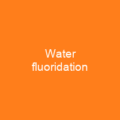
The Importance of Safe Drinking Water
Imagine your body as a garden; just like plants need clean water to thrive, so do humans. Safe drinking water is not merely a luxury but a fundamental right for every individual on the planet.
Global Challenges and Statistics
Did you know? Over 1-2 billion people worldwide lack access to safe drinking water, with developing countries bearing the brunt of this issue. This stark reality highlights the urgent need for global action and investment in infrastructure.
Water Sources and Treatment
The sources of potable water are diverse—springs, aquifers, rainwater harvesting, surface water, and even desalinated seawater. However, these sources must undergo rigorous treatment to meet drinking water quality standards set by organizations like the World Health Organization (WHO).
Transporting Drinking Water
The most efficient way to transport potable water is through pipes, but this method can be costly and prone to leaks. In the United States, households use an average of 300 gallons per day, with only a small percentage used for drinking and cooking.
Animal Husbandry and Water Requirements
In the context of animal husbandry, water requirements vary significantly by species. For instance, a dairy cow might need about 35 U.S. gallons (130 L) per day, while a horse requires only a third of that amount, and a hog needs just a tenth.
Quality Standards for Drinking Water
What makes drinking water safe? According to the WHO’s 2017 report, it is water that does not pose any significant risk to health over a lifetime of consumption. Parameters for drinking water quality typically fall into three categories: microbiological, chemical, and physical.
Contaminants and Health Risks
Pesticides and perfluorinated alkylated substances (PFAS) are potential contaminants that can pose health risks through chronic exposure. The WHO considers access to safe drinking water a basic human right, as contaminated water is estimated to result in more than half a million deaths annually.
Health Impacts of Poor Water Quality
Poor water quality is linked to diseases such as cholera, diarrhea, dysentery, hepatitis A, typhoid, and polio. In developing countries, lack of sanitation and poor hygiene are the main causes of contaminated drinking water.
Notable Incidents and Treatment
Examples of poor drinking water quality incidents include the cholera outbreak in London’s Soho district, arsenic poisoning in Bangladesh, chromium-6 contamination in Hinkley, California, and the Walkerton E. coli outbreak in Ontario, Canada. The Flint water crisis is another stark reminder of the importance of safe drinking water.
Treatment Technologies
Techniques such as filtration, chemical disinfection, and exposure to ultraviolet radiation can significantly reduce levels of waterborne disease. Desalination is used in dry areas with access to large bodies of saltwater.
Global Access and Monitoring
Access to safe drinking water has improved globally from 76% in 1990 to 91% by 2015, but Sub-Saharan Africa still lags behind with the lowest rates of access. The WHO/UNICEF monitor progress towards halving the proportion of people without access to safe drinking-water by 2015.
Regional Progress and Challenges
Australia, New Zealand, North America, and Europe have achieved nearly universal basic drinking water services, while poorer nations face challenges due to high infrastructure costs. The job is far from finished; continued efforts are needed to reduce urban-rural disparities and inequities associated with poverty.
Regulations and Standards
The quality of our drinking water is not just a matter of health but also a legal requirement in many countries.
Global Legislation
The European Union sets legislation on water quality, with the primary piece of legislation being Directive 2000/60/EC. Japan’s Ministry of Health revised its water quality standards in April 2004, and Singapore updated its water quality regulation in 2019.
Regulatory Bodies
In the United Kingdom, the Water Services Regulation Authority (Ofwat) protects consumer interests by promoting effective competition. In Scotland, the independent Drinking Water Quality Regulator is responsible for water quality, while in Northern Ireland, the Drinking Water Inspectorate regulates drinking water quality of public and private supplies.
Conclusion
The journey to safe and clean drinking water is ongoing, with challenges that require global cooperation and commitment. As we continue to face crises and adapt our policies, one thing remains clear: access to safe drinking water is not just a luxury but a fundamental human right. Let’s work together to ensure every individual has the lifeblood they need.
You want to know more about Drinking water?
This page is based on the article Drinking water published in Wikipedia (retrieved on November 23, 2024) and was automatically summarized using artificial intelligence.







